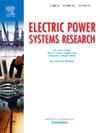用于储能还原的串联式分数阶电动弹簧
IF 4.2
3区 工程技术
Q2 ENGINEERING, ELECTRICAL & ELECTRONIC
引用次数: 0
摘要
可再生能源(RES)的兴起凸显了对储能的需求。然而,与电池储能系统(BESS)相关的高成本对RES的广泛采用构成了重大障碍。电弹簧(ESs)有可能减少RES系统对存储容量的依赖。在传统的ES设置中,通过将ES与非关键负载(NCL)串联以稳定关键负载(CL)的电压来控制功率波动。然而,这种方法会导致NCL的电压变化很大,并且受可用NCL数量的限制。为了解决配电网中CL数量有限的问题,本文提出了一种串联ES与CL直接连接的串联型分数阶ES (S-FES)。S-FES利用分数阶分量(FOC)吸收或耗散各种阶有功功率的能力,通过调整分数阶分量和阻抗来维持CL的稳定电压,从而降低整体储能要求。在可比条件下,与BESS相比,所提出的S-FES可以将储能容量减少约70%,同时将功率因数(PF)提高到1。然后详细介绍了S-FES的拓扑结构和控制策略,并通过仿真和实验结果验证了其有效性。本文章由计算机程序翻译,如有差异,请以英文原文为准。
Series-type fractional-order electric spring for energy storage reduction
The rise of renewable energy sources (RES) has highlighted the demand for energy storage. However, the high costs associated with battery energy storage systems (BESS) pose significant barriers to wider adoption of RES. Electrical springs (ESs) have the potential to reduce the dependency of RES systems on storage capacity. In conventional ES setups, power fluctuations are managed by connecting ES in series with non-critical load (NCL) to stabilize the voltage of critical load (CL). However, this approach results in considerable voltage variations for NCL and is limited by the number of available NCL. To address the challenges in distribution networks with a limited number of CL, this paper proposes a series-type fractional-order ES (S-FES) by connecting ES in series with CL directly. Leveraging the ability of fractional-order component (FOC) to absorb or dissipate active power at various orders, the S-FES maintains stable voltage for CL by adjusting the fractional order and impedance, thereby reducing the overall energy storage requirements. Under comparable conditions, the proposed S-FES can reduce the energy storage capacity by approximately 70% compared to BESS, while improving the power factor (PF) to unity.The paper then goes on to detail the topology and control strategy of the S-FES, and demonstrates its effectiveness through simulation and experimental results.
求助全文
通过发布文献求助,成功后即可免费获取论文全文。
去求助
来源期刊

Electric Power Systems Research
工程技术-工程:电子与电气
CiteScore
7.50
自引率
17.90%
发文量
963
审稿时长
3.8 months
期刊介绍:
Electric Power Systems Research is an international medium for the publication of original papers concerned with the generation, transmission, distribution and utilization of electrical energy. The journal aims at presenting important results of work in this field, whether in the form of applied research, development of new procedures or components, orginal application of existing knowledge or new designapproaches. The scope of Electric Power Systems Research is broad, encompassing all aspects of electric power systems. The following list of topics is not intended to be exhaustive, but rather to indicate topics that fall within the journal purview.
• Generation techniques ranging from advances in conventional electromechanical methods, through nuclear power generation, to renewable energy generation.
• Transmission, spanning the broad area from UHV (ac and dc) to network operation and protection, line routing and design.
• Substation work: equipment design, protection and control systems.
• Distribution techniques, equipment development, and smart grids.
• The utilization area from energy efficiency to distributed load levelling techniques.
• Systems studies including control techniques, planning, optimization methods, stability, security assessment and insulation coordination.
 求助内容:
求助内容: 应助结果提醒方式:
应助结果提醒方式:


